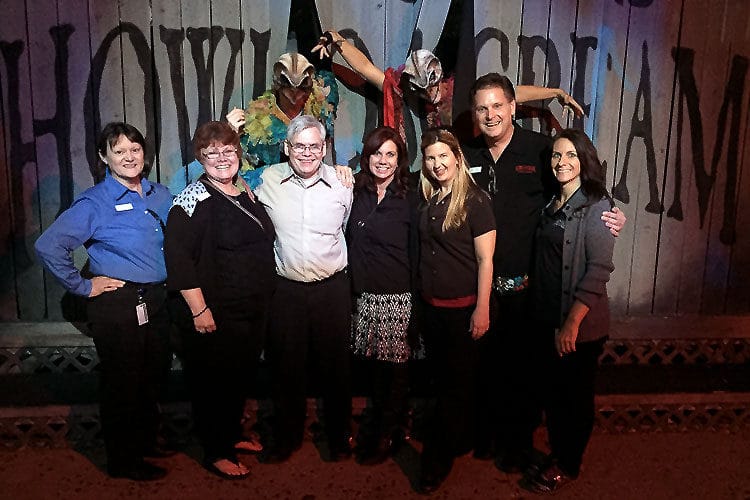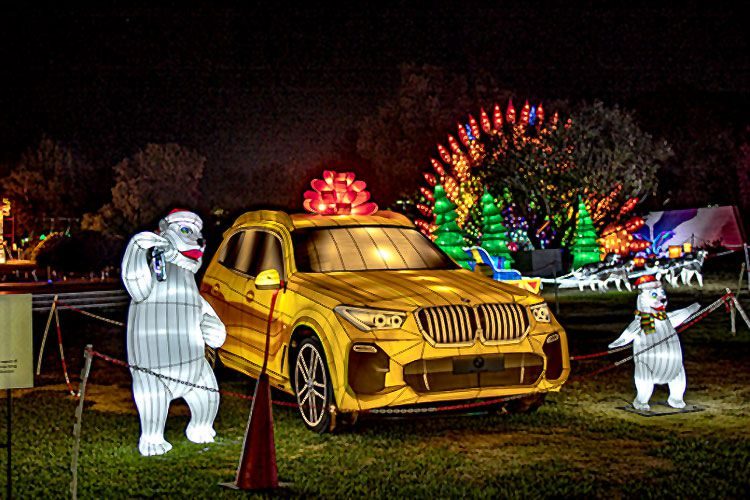John Featherstone, a thought leader in the design space, shares how designers craft memorable moments.
Perhaps the best way to explore this issue’s theme of ‘Crafting Memorable Moments through Elevation, Insight, Pride, or Connection’ is via insight from someone who’s spent his career crafting moments. Master designer John Featherstone, co-founder of Lightswitch Lighting and Design, discussed the theme in depth with us, and we have distilled the actionable items for you in this article.
A Little Background on John
John began his career working in concert lighting design. As a teenager, he went on tour with The Smiths in the mid-’80s just as the band was hitting it big. After the group broke up, Featherstone was involved with one major concert tour after another including Janet Jackson, The Cure, and Van Halen. Much of the emphasis of his work was on creating memorable experiences through lighting design.
Fast forward to the founding of Lightswitch in 1993; John and his business partner, Norm Schwab, wanted to “create truly different and distinctive” lighting and visual design. Twenty-five years later, the company continues to do just that.
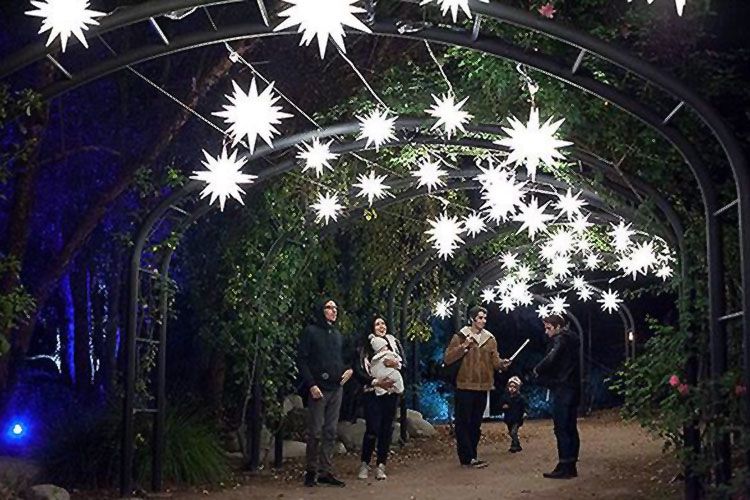
Finding Natural Peaks
Natural memorable moments exist in our lives, which we can build up or fill in. Concerts act as natural ‘milestones,’ because guests look forward to them as a deviation from usual routine. “The experience of going to a concert is pre-primed to become a memorable moment,” said Featherstone. “In the concert market, fans talk to their peers about the event and save up for it, so it is a huge deal. It already has that emotional arc, if you will… The fan gets to see their star, the roadies give them a service, they have a great time, they get a t-shirt, and all these relevant contact points in the concert-touring market translate the overall experience into a memorable moment,” he noted.
How do you determine natural peaks in an experience? Featherstone explained, “One thing I emphasize in university classes is being focused on who the ultimate client is. That is whom we want to deliver the memorable moment to. I think this is the first takeaway for any creative team—in delivering a memorable moment, what can you do to prime yourself for success? What can you pre-deliver on?”
Case Study: The Morton Arboretum
John uses his recent experience at the Morton Arboretum as an example of making moments more memorable. “Last year, we used the Gantom Snowflakes as part of the Illumination experience [at the Arboretum]. By weaving the story of that deliverable into the pre-event marketing, it helped people get a sense of anticipation—those that pre-purchased the ticket had the Snowflake sent to them, and that was part of the experience,” he said. “There are three [natural moments to use] when creating a memorable moment—pre-event, at the event, and post-event.”
“Elevation is a lot of what we do, and elevation means boosting sensory appeal or breaking the script,” he began. “A lot of what we do in ‘Illumination’ [Morton Arboretum’s Christmas events in Lisle, Illinois near Chicago that was designed by John’s team] is breaking the script, because, generally, people expect to go to a thing but not go to be part of the thing,” he said.
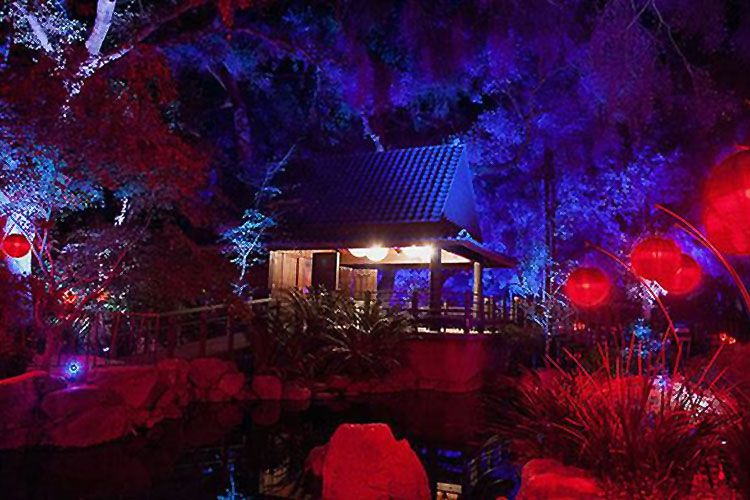
The Smiths & Janet Jackson Use Connection
John elaborated on the aspect of connection through shared community struggle and participation to create memorable moments. “The sense of self-identification is the real hallmark to having super sticky experiential opportunities—this notion of people wanting to belong. That is something we explored in depth with The Smiths. Many in their fan base are marginalized, people who are maybe a little intellectual, people who are maybe a little—this is a horrible word, but I cannot think of another—more sensitive, let’s call them, a little more aware of their life condition and the living condition of others. Having members of the audience bring flowers to the gigs was a conscious decision on the part of the band and their team to create that experience of belonging. It ticked the boxes hard for this notion of participation.” John’s example of the flowers in simple, but guests immediately see they have shared values with those around them- immediate connection.
“[Participation] was a through line with Janet Jackson’s first tour, Rhythm Nation. Janet made a conscious decision to have a very, very strong political…not even undercurrent but an overt, political current to Rhythm Nation. It was about using creativity as a tool to bridge cultural, economic, race, and sexual divides, and bringing people together under the auspices of everyone embracing their creative spirit. There was a strong sense of tribe to Rhythm Nation. The tribe is present with most fans, but indeed, The Smiths and Janet Jackson were among performers I worked for that had the most active sense of participation. Janet and The Smiths nailed what it was like to be included in that experience. That intense, visceral, audience reaction stuck with me and became a hallmark of some of the things I wanted to add in my work going forward.
“One thing I miss by no longer doing concert work is that moment when the house lights go out, and the building erupts. My goal is to try and get that sense of adrenaline rush, that visceral kind of near-physical response, in every project I do—whether it is a business meeting for a corporation or an experiential opportunity like ‘Illumination.’ That visceral rush of anticipation is a good goal that anybody in the creative field should set for themselves.”
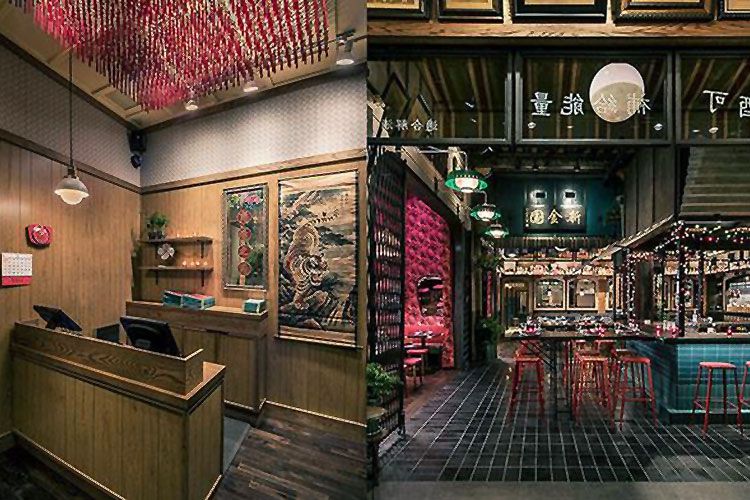
It is All About Listening…
To create memorable moments, we need to know our audience well. What’s the best way to do this? The key is listening carefully to find out what they do not want, what they have done before, and how we can exceed those desires and expectations. Listening is what Featherstone did during his stint as lighting designer for The Smiths and others in the concert market, and it’s what he continues to do today with all his clients.
“In 1980s UK, there was a political climate yearning for release. I would describe the essence of The Smiths as embracing a tongue-in-cheek, good-natured sense of self-deprecating hope.” Pausing a moment, he added, “A through line for anybody working in the creative field is to get good at listening.”
“My job as a designer isn’t about the people that are within 100 feet of the stage. The people within 100 feet of the stage are going to get a physical connection with the artist. They’re close enough that they can read the artist’s face. They’re almost in the show. My job is to take the meaning, the essence, the spirit, the emotion, the gestalt of the performer’s work, expand that, and blow it up. I become like a lens to communicate what it is the artist wants to say to the people who are farther away—the people in the balcony of a theater or the distant parts of a stadium. The only way that I can do that is by having a clear understanding of what is intended,” he said.
“The Smiths, Morrissey, In Excess, Van Halen, and Janet Jackson were absolutely, 100% certain what they were trying to say with their songs and would expound upon it at great length. The only way I can understand what it is they’re trying to communicate is by listening to them. They may be trying to communicate something that’s as deeply, socially, and economically connected as Janet’s message with Rhythm Nation, or it may be the aesthetic that In Excess wanted to communicate to their audience. In Excess not having an overarching social message like Janet doesn’t mean their message is any less important or that the design is any less relevant in helping the audience feel connected, engaged, and communicated with.”
…and Making Sure Everyone Walks Away Feeling They Were a Part of the Experience
John continued, “Nobody wants not to belong. There’s nothing worse than having somebody an experience feeling like they did not belong. If this happens, we, as an industry, as crafters of live events of any nature, have failed. I don’t care if somebody walks away confused as long as they’re engaged. I don’t care if somebody walks away with any number of passionate feelings about an event. I don’t care if somebody walks away saying they didn’t like it. However, if somebody walks away saying they felt like he or she didn’t belong, then I think we have failed,” he stated.

What are you Listening For?
“I ask people questions about what their ideal Twitter feed would look like. If you see a tweet from somebody about your event, what do you want it to say? You’re sitting on an airplane a row in front of a couple of people who have been at your event, and you hear them talking about it. What do you want them to say? I find permitting people to frame it in other people’s words is liberating. It gets you away from “I want.” I teach that every event is four shows. It’s the show or project you do for yourself, the one you do as part of the creative team, the one you do for the client (the producer or the end client or whatever), and the one you do for the ultimate client, which is the audience. All of those need to stay in alignment to one extent or another. I’m less interested in what the producer wants, and I’m more interested in what he/she wants the audience to feel. This approach gets people out of the trap of the ‘I want the event to do this.’ No, no, no. What do you want the audience to feel? How do you create a memorable moment by creating the kind of moment they want and not the kind of moment you want?” Focusing on the what the individual audience should say and feel breaks the generalizations we place on projects; we move from ‘we need a show that appeals to millennials’ to ‘here’s Joe, one of our largest fans- what will Joe say and feel after the show?’
The Example of Millennials
Connection requires understanding the individual requirements of the guest and straying away from general demographic profiles (as covered in the listening section above). We hear “Millennials, Millennials, Millennials” all day long, but more people are sitting in the boomer-plus-generation age bracket than in any other age bracket. Some of these boomers are the folks that John first produced shows for back in the day. We asked for his comments on Millennials and boomers and creating memorable experiences for each outside of the demographic generalizations.
“Millennials are members of a demographic that’s demanding its particular sense of experience,” said John. “They’re the sharpest of the sharp end of the trust crisis, and they’re understandably skeptical because they’ve seen their parents and grandparents ripped off and let down by financial institutions, and they don’t want any part of that. They see through a lot of the bullshit of traditional marketing, particularly the mass-media piece you were talking about, and they want to take control of and curate their own experience. That does not mean they want to control everything. It means they want to be responsible for controlling the speed and depth of the experience. It’s just understanding the demographics of another group of people. It’s not like they are aliens,” he pointed out.

Simplify, Simplify, Simplify, then Exaggerate
After listening and breaking down design intent, what next? There’s a line from a book about Jimmy Hendrix called Crosstown Traffic that says: “Simplify, simplify, simplify, then exaggerate, exaggerate, exaggerate.” I asked John if that idea resonated.
“That goes to this notion of getting crystal clear on what it is you’re trying to do. Clarity is one of the reasons for the success of Morton Arboretum’s ‘Illumination’ and ‘Enchanted Forest of Light’ for Descanso Gardens in California. In both, we’re super clear on what we’re trying to do, and then, essentially, we take that concept and blow it up. So, to use ‘Illumination’ as an example, the simple notion is that we’re champions of trees and that trees are the stars. That’s our touchstone. We then blow that up to 40-some acres and a mile and a half of walking trail, and all these experiences along the way. However, the core takeaway is simple for visitors—Morton Arboretum is a champion of trees, trees are essential, trees in the winter are more than just something to hold up twinkle lights. I think this is why we resonate with Morton Arboretum and why they resonate with us: They have a strong message, we heard their message when they talked with us, and we delivered an experience which was on point,” said Featherstone.
“The more you can define the message you’re trying to deliver, the more powerful it will be. Simplification is a finessing of one’s craft and one’s art. There’s another quote that says, ‘If I’d have had more time, I’d have written a shorter letter.’ What this is saying is that sitting down and dashing off 20 pages is easy but writing one page or one paragraph that’s super tight, really on point, and communicates the message is hard,” said Featherstone.
“This idea of simplicity is why I think haunted houses are such a distinctive part of our entertainment spectrum. The ones that I’ve seen and liked are super clear on what they’re doing: They’re going to scare the shit out of you. There’s no other way to put it. There’s a purity of intent. Now, obviously, there’s an art form in designing an effective haunted house, and it’s something that I, as an observer, find fascinating—the differences in design. However, it begins with a perfect example of ‘simplify, simplify, simplify, then exaggerate, exaggerate, exaggerate.’ The design of haunted houses tends to strip it down to the simplest of spaces—human emotions. It’s like turning human beings into a set of buttons and then poking the bejesus out of those buttons. The key is asking yourself, as a creative group, “Are we pressing those buttons in an appropriate and meaningful way?”
John added, “Making it simple doesn’t mean you can’t have fun with it. One of the things that we’ve enjoyed on some projects is setting up a little creative bait-and-switch. What I mean by that is, you set up an expectation, you start to deliver on that expectation, and then you pivot on it. For example, we used a very limited color palette with The Smiths. Essentially, I used greens and blues… except for in one of their songs, ‘Meat is Murder,’ which was lit entirely in red. The stage went from these naturalistic blues and greens and this tonally organic color palette to just dripping-in-blood red. It created a visceral reaction in the audience.”
Breaking the Script
Audiences enter attractions with expectations. Guests feel belonging when those expectations are met (IE the culture matches their expectations). I asked John if there’s a way to reach guest expectations but also allow for breaking the script.
“Audiences have higher standards than they’ve ever had and they’re simultaneously less discriminating,” he noted. “Also, people have different levels of expectation based on the environment in which they’re receiving that experience. One of the areas where we see this is in the restaurant industry, where the physical experience of the restaurant has become so incredibly important. A great example is a restaurant we designed in Chicago called Duck Duck Goat. My brilliant partner, Harvey Moore, designed a phenomenally immersive, engaging experience for the chef, Stephanie Izard. Stephanie is a master of Pan Asian cuisine. She wanted a Chinese restaurant that felt much like a Chinese street market. The place feels like you’ve stepped into a Chinese environment, and that’s what people expect now. They want a degree of elevation to every experience. They’re no longer saying, ‘Well, I’m just out for dinner,’ or, ‘This is just a thing at my local arboretum,’ or, ‘This is a haunted house in my local strip mall.’ There’s an elevated level of experience that’s very high, but it’s also about the emotional content of that experience,” he said.
“When it comes to breaking the script, delivering a sense of connection, and delivering a sense of participation, I’ve seen people spend hundreds of millions of dollars and fail, and people spend tens of dollars and succeed triumphantly,” he noted.
“Here’s another great example,” said Featherstone. “In Sweden, they have this rather wonderful ABBA Museum. Inside the ABBA Museum is a plain red telephone, and one of the members of ABBA is committed to calling that line once a day. The phone rings and some unsuspecting attendee at the ABBA Museum picks up the phone and hears, ‘This is Agnetha. What can I tell you about?’ alternatively, ‘This is Björn. What questions do you have?’ Talk about creating memorable experiences! Those small, random acts of immersion are so powerful, and they’re often based on the human condition—not on what we get all foamy about, which is the technology and all that stuff.” John’s example illustrates how the museum keeps guest expectation, while still allow for the ‘pivot’ of surprise.

Cross Pollination to Break the Script
John explained how co-founding Lightswitch allowed him to cross-pollinate ideas; cross-pollination enables you to more easily ‘break the script’ by taking ideas from other industries into your work. “The other thing that Norm and I consciously sought [when founding Lightswitch] was this idea of cross-pollination. We’ve seen an explosion of this in the last 25 years. It plays out as a museum exhibit wanting a little bit of the excitement of a theme park ride, and every theme park wanting some of the advanced technology of a rock ‘n roll show. Every restaurant experience wants a little bit of the gravitas of fine retail, and every fine retail experience wants to feel a little bit like a great museum experience. We saw this explosion—the start of this wave of production technology in the corporate realm—where people were going from a stage wash and a couple of people delivering business speeches to something that was more interesting and engaging. “Was there a certain amount of hold-my-nose-and-jump-into-the-pool? Yeah, there was. But exactly the sort of cross-pollination that we thought we’d see happening has indeed happened” he explained.
Embedding Pride
As we wrapped up, John spoke to the idea of pride in creating memorable moments. “To us, one of the best ways of increasing guests’ pride is to give them a sense of participation/ownership. By that I mean, they feel they’re in some way crafting the experience, and it makes a difference whether they’re there or not. Wearable devices are an excellent example of this, whether it be Disney’s Mickey Mouse ears or pendants [or interactive Snowflakes]. These are a perfect way of making guests feel part of the show not just watching the show. You want to give people the opportunity to manipulate and participate in the environment in a way that lets them create something of which they can be proud. That’s how I view pride,” he said.
“You cannot be proud when it does not matter whether you are there or not. There are many ways to elevate the degree of participant touch points. It could be a Lego set in the lobby where kids can create something. It could be each guest’s opportunity to craft their journey. It could be some decision points on which you confer as a group. I enjoy escape rooms because of the collaborative group aspect. That sense of pride is only going to come when you give people a sense of ownership.”
John continued: “You can also instill in guests a degree of implied responsibility. Let me use Morton Arboretum again as an example of this. The Arboretum was concerned that some of the interactive experiences would turn into free-for-alls. Some people behave like hooligans. They’re everywhere, but the nature of being part of big-group experience enforces behavior in a way that’s restored my faith in humanity time and time again. The big groups in the Morton Arboretum respond in ways that are largely compassionate, considerate, thoughtful, and intellectual. If you have an experience that requires a certain degree of intellect, we’re back to the pride thing of, ‘I’m smart enough to do this and do it well.’ Any idiot can knock a castle over. It takes a little sense of gravitas and skill to create something. I think that also ties into this notion of consequences and pride: ‘I want to do something I’m proud of, because the people watching me do it are either Mom and Dad or people I don’t even know, so I want to do something cool,’” he said.
“I imagine this is something that resonates with haunted house people. In the haunted houses I’ve been to—and I’ve been to a bunch—I don’t see people behaving in ways that are inappropriate. They’re not trying to bust the gag. They don’t go into the haunted house, generally, and turn on their cellphone flashlight to try to ruin something that’s been set up for everybody to enjoy. It turns into a self-policing level of responsibility for everybody’s experience.”
In closing, John offered these words, “It’s good for all of us to think about the bigger-picture experience here, whether you’re designing a restaurant, a theme park, a haunted house, something like ‘Illumination,’ a concert, or whatever. We all need to be constantly vigilant about the experience of our guests. Everybody that’s reading this, everybody that’s interested in this, is working toward optimal experiences. I hate it when my friends fail because I want everybody to have a great experience, whatever live event they go to because that’s how our whole industry succeeds and we all get to continue doing what we love.”
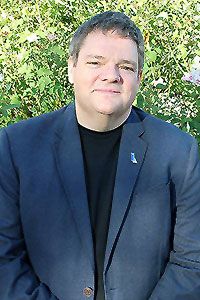
John Featherstone brought his theatre training and rock and roll sensibility with him when he left his native United Kingdom for the US in1989. Over time his work has expanded to include museum, corporate and event lighting design, and he has developed a reputation for producing singular, elegant design featuring innovative and cost-effective lighting choices. A leader in the design industry, riding the cutting-edge of technology, he is perennially in pursuit of the next, great project.
Key Takeaways:
- The first takeaway for any creative team is to ask, in delivering a memorable moment, what can you do to prime yourself for success? What can you pre-deliver on?
- John proposes three broad timeframes for you to pay attention to: pre-event, at the event, and post-event.
- The designer’s mission is to take the meaning, the essence, the spirit, the emotion, the gestalt of the performer’s work, expand that, and blow it up. Become a lens to communicate what it is the artist wants to say to the people who are farther away [from the performer].
- Move from want to feel. As John states “I’m less interested in what the producer wants, and I’m more interested in what he/she wants the audience to feel.”
- Nobody wants not to belong. There’s nothing worse than having somebody an experience feeling like they did not belong.
- Simple is powerful.
- Guests now expect a degree of elevation to every experience.
- Small acts of immersion are powerful and do not require technology.
- Every event is four shows. It’s the show you do for yourself, the one you do as part of the creative team, the one you do for the client, and the one you do for the audience.
- One of the best ways to increase guests’ pride is to give them a sense of participation/ownership. They need to feel they’re in some way crafting the experience, and it makes a difference whether they’re there or not.
- You want to give people the opportunity to manipulate and participate in the environment in a way that lets them create something of which they can be proud. You can’t be proud of something that doesn’t seem like it cares whether you’re there or not.
Quiz Yourself:
- Can you recall the memorable pre-event, at-the-event, and post-event aspects in an experience you attended? List them.
- How did Janet Jackson & The Smiths foster a sense of community in their audiences?
- Recall a recent example in which you felt you were indeed a part of an experience or event. Can you define what contributed to your sense of belonging?
- What would you most want to read on Twitter or overhear people saying about your event or attraction?
- Write out the answer above and outline the emotion. Find the core.
- Using your answers above, can you simplify the core of your attraction? Try applying a schema to explain the essence simply. For example, directors used “Jaws on a spaceship” for Alien.
Using your event or attraction, can you think of a way to apply the “simplify, simplify, simplify, then exaggerate, exaggerate, exaggerate” axiom? - What do you need to do to deliver that memorable moment?
About The Author
Philip Hernandez
Philip Hernandez is a freelance writer, speaker, producer, and marketer specializing in Seasonal Attractions.
In 2018, Philip became the CEO at Gantom Lighting & Controls, a manufacturer of the world’s smallest DMX LED lighting. Gantom is used in every major theme park worldwide to illuminate where other fixtures cannot.
Since 2014 Philip has published Seasonal Entertainment Source magazine (SES), a quarterly print publication for the seasonal attraction professional. SES ships to readers in over 18 countries.
Philip operates the Haunted Attraction Network (HAN), the largest global media entity for the haunted attraction industry. HAN includes written content, videos, a series of podcasts, and the Haunt Design Kit brand.
Philip produces the Leadership Symposium for Seasonal Attractions, a masterclass series for seasonal attraction professionals. Watch more here.
Philip co-hosts the ‘Marketing your Attraction’ podcast monthly. Listen here.
Contact Philip for projects here: [email protected]


